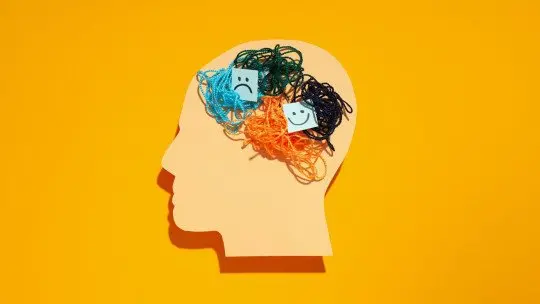It is important to recognize that people with Borderline Personality Disorder (BPD) are not bad. It is a clinical condition that is characterized by a changing mood, impulsive behaviors, and difficulties maintaining stable relationships, but behind these behaviors there is deep emotional suffering of those who suffer from it.
Addressing BPD requires understanding, empathy, and appropriate treatment rather than labeling affected people as “bad.” In this PsychologyFor article, we will provide you with information about whether BPDs are bad people why they are sometimes stigmatized, and how to help them.
Why BPDs are sometimes stigmatized as “bad people”
The social stigma around Borderline Personality Disorder (BPD) as “bad people” arises mainly from lack of understanding and misperception of the behaviors associated with the disorder. People with BPD may exhibit behaviors that are impulsive, emotionally volatile, or difficult to understand for those unfamiliar with the disorder.
This can lead to misinterpretations and hasty judgments about his character. It must be taken into account that BPD is a life condition that interferes with the development of social, work and family relationships. Furthermore, negative stereotypes and a lack of accurate information contribute to perpetuating this stigma. Promoting greater awareness and understanding of BPD is essential to combat this type of stigmatization.
Characteristics of people with BPD
To identify people with borderline personality disorder (BPD), it is necessary to be clear about their characteristics. We see them below:
- emotional instability – Experience intense and rapid mood swings, often triggered by seemingly insignificant events. Changes in the mood of people with BPD can appear as rapid transitions from states of euphoria to exacerbated sadness. Likewise, the feeling of emptiness and lack of self-identity can be harmful.
- Unstable relationships : They have difficulty maintaining stable and healthy interpersonal relationships due to the feeling of abandonment or fear of rejection. Bonds with family, friends or partners are unstable and can be interrupted at any time.
- Impulsiveness : People with BPD act impulsively in various areas of their lives, such as spending, sexual relations, medications, or substance use, among others.
- Feelings of emptiness : They experience a deep feeling of inner emptiness, which can lead them to constantly search for activities or relationships to fill that emotional void.
- Suicidal ideation : Have recurring thoughts of suicide or self-harming behaviors as a means of coping with emotional distress.
- Fear of abandonment : They have an intense fear of real or perceived abandonment, which can lead them to behave in extreme ways to avoid separation from loved ones. In this article you will see what the wound of abandonment is and how to heal it.
- Impulse control difficulties : They experience difficulties regulating their emotions and behaviors, which can result in impulsive and risky actions.

How to help a person with Borderline Personality Disorder
Helping a person with Borderline Personality Disorder (BPD) requires understanding, patience, and ongoing support. Beyond the problems that may arise throughout life, there are the following ways to help a BPD person:
- Find information about the disorder : Educating yourself about BPD can help you better understand what the person is experiencing and how you can support them effectively. In this article you will see How to treat a person with borderline personality disorder.
- listen to him : Pay attention to their feelings and concerns without judging them. Empathy and understanding are critical to establishing a meaningful connection with a person with BPD.
- Set healthy boundaries : It is important that you establish clear and realistic boundaries in the relationship to protect both your well-being and that of the other person. This may include setting boundaries around acceptable behavior and mutual expectations.
- Support professional treatment : encourages the person to seek professional help from a therapist who specializes in personality disorders. Support her in the treatment process and accompany her to appointments if necessary.
- Encourage him to have a healthy lifestyle : Helps the person maintain a healthy routine that includes regular exercise, balanced eating, adequate rest, and stress management techniques such as meditation or deep breathing. This helps reduce the intensity of the symptoms.
- Provide emotional support : Be a support during difficult times. Recognize the person’s efforts to improve each day, and encourage them to keep going even when things are difficult. In this article you will find information about Emotional Support: what it is, examples and how to give it.
This article is merely informative, at PsychologyFor we do not have the power to make a diagnosis or recommend a treatment. We invite you to go to a psychologist to treat your particular case.
If you want to read more articles similar to Are BPDs bad people? we recommend that you enter our Clinical Psychology category.
Bibliography
- American Psychiatric Association (2013). Diagnostic and statistical manual of mental disorders (5th edition). Arlington: Panamericana Medical Publishing House.
- García López, MT, Martin Pérez, MF, Otín Llop, R. (2010). Comprehensive treatment of Borderline Personality Disorder. Journal of the Spanish Association of Neuropsychiatry, 30 (106), 263-278.
- Mosquera, D. (2011). Borderline personality disorder. A conceptual approach to the DSM criteria. Digital Journal of Psychosomatic Medicine and Psychotherapy, 1 (1), 1-26.









